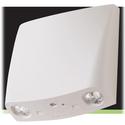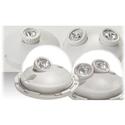
Sure-Lites Self Diagnostic LED Nickel–Metal Hydride (NiMH) Thermoplastic Dual 120/277 voltage Self Diagnostic
Sure-Lites
Whether your use involves a commercial, residential, upscale architectural or hazardous industrial market; a new or retrofit application, you have a choice of fixtures from a full line of products that meet NEC and UL standards. Solid-state electronics - switching and charging, overload protection and low voltage disconnects, plus brown-out protection circuitry assure reliability for every application. A new generation of high output, sealed, leak-proof and maintenance-free batteries further define Sure-Lites as a leader in the industry.
Self Diagnostic
Self DiagnosticLED
These energy-saving light emitting diodes use less than 5 watts of power, and comply with most insurance standards and building fire codes. Their greater efficiency, and lower energy consumption can save you money every month. We offer a wide range of designs and features for lighted LED exit signs including: EdgeLit Exit Sign, Steel Exit Signs, Wet Location Exit Signs and Self Testing Exit signs.Thermoplastic
Thermoplastic is a material, a polymer, that becomes pliable or moldable above a specific temperature and solidifies upon cooling.Dual 120/277 voltage
Dual 120/277 voltageNickel–Metal Hydride (NiMH)
NiMH batteries can have two to three times the capacity of an equivalent size NiCd, and their energy density approaches that of a lithium-ion cell. Nickel–Metal Hydride batteries are good for high current drain applications because of their low internal resistance.
The disadvantage of NiMH batteries is their high rate of self-discharge. NiMH batteries typically lose 4% of their charge per day of storage. LSD NiMH batteries significantly lower self-discharge, but at the cost of lowering capacity by about 20%.


